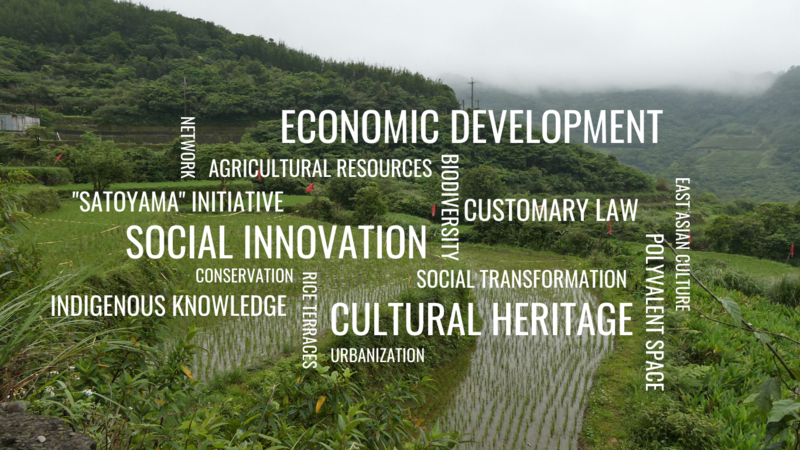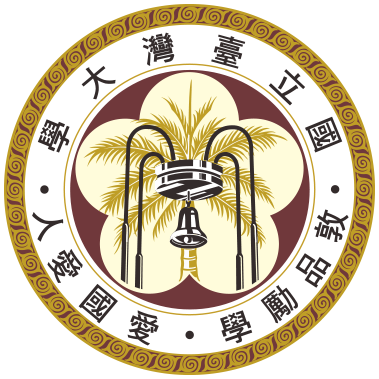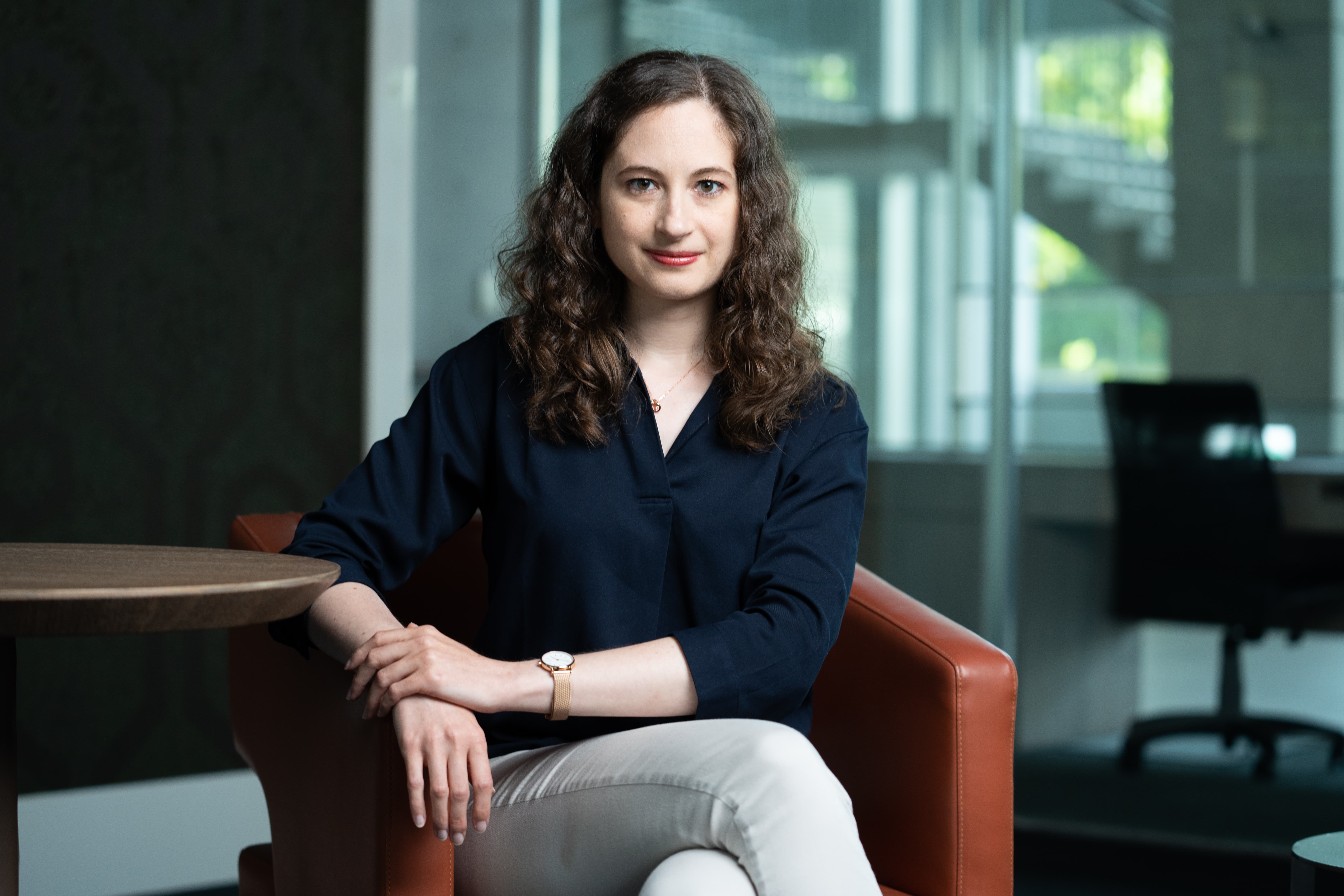Gazing at a lush green canvas, we carefully roamed through water-filled rice fields that mirrored the mild sunlight and marshmallow clouds scattered in the sky. “In Taiwan’s remote mountainous regions, rice terraces used to be a common type of landscape. However, following rapid urban and industrial development, more and more inhabitants left their fields to earn higher incomes in surrounding cities and towns. With the abandonment of their fields, not only a beautiful landscape disappears, but related ecosystem services and contributions to local biodiversity equally decline,” Dr. Fabienne Wallenwein said as we climbed the staggered terraces at Shimen Songshan in the outskirts of Taipei.
Decoding the Cultural Significance of a Rice Terrace Landscape
To many people, ‘rice terrace’ is probably just a geographical term. However, its cultural significance is much more comprehensive. On the one hand, a terrace landscape can be regarded as a rich reservoir of traditional knowledge, ranging from place-specific irrigation and farming techniques to knowledge on how to treat natural resources and to retain habitats for endemic plant and animal species. On the other hand, rice terrace cultivation produces only a small agricultural yield as most of the work is undertaken by hand. The difficult conditions of this mode of agricultural production are a major reason why younger generations seek alternative future perspectives. Without young and engaged practitioners, local knowledge accumulated over centuries will eventually be lost. Hence, there is an urgency for raising awareness and action.
Researching Cultural Landscapes in Asia
The great adaptability of Asia’s cultural heritage practices catalyzed Fabienne’s passion for the topic of heritage revitalization. Not only is she interested in creative reinterpretations of immaterial heritage (e.g. local customs, traditional handicrafts), but also in historic architecture and how it is adapted to contemporary needs. Currently, she is part of an interdisciplinary research tandem in Heidelberg University’s Flagship Initiative, which is titled “Transforming Cultural Heritage”. This initiative brings together humanities with social sciences research and investigates heritage activation and reactivation mechanisms in marginal regions. Such mechanisms include the development of new product ideas and the utilization of local knowledge for the conservation of cultural and biodiversity.
Taiwan is a suitable place for Fabienne’s research on this relation between cultural heritage and landscape revitalization. Its Ministry of Economic Affairs recently started several initiatives to apply the social innovation concept in rural contexts, particularly in the area of agriculture. Moreover, local NGOs have tried out different conservation approaches in cooperation with the Forestry Bureau, including the invention and creative marketing of local agricultural products and the organization of art festivals in the terraces.
Fabienne’s research further discusses leading international conservation programs such as the “Satoyama Initiative” proposed by Japan’s Ministry of the Environment and the United Nations University Institute for the Advanced Study of Sustainability (UNU-IAS). In 2010, this initiative was introduced to Taiwan. The term “satoyama” refers to a particular kind of landscape in which socio-economic activities are consistent with natural processes, thus creating a mutually beneficial relationship between humans and nature.

Gaining New Perspectives and Taiwan-Experience
Fabienne has an academic background in East Asian Studies, Chinese Studies and Economics. Her PhD project focused on heritage-led regeneration of urban residential areas in China’s Jiangnan region. In her current project, she pursues a twofold aim. On the one hand, she strives to enrich and challenge European perspectives on heritage conservation by introducing Asian approaches and practices into the European discourse. On the other hand, she aims to provide critical input that may enhance heritage conservation practice and foster a cross-cultural dialogue. During her recent research stay in Taiwan, she was hosted by Prof. Hsien-Hao Liao, Dean & Distinguished Professor at the Institute for Advanced Studies in the Humanities and Social Sciences.

During this first visit to Taiwan, Fabienne greatly appreciated the hospitality and cultural richness she encountered. Thanks to a warm and welcoming attitude, both from the sides of university faculty members and local farmers, she was able to gain many valuable insights and a more thorough understanding of local landscape revitalization initiatives. The reliable public transportation system and advanced use of digital technology at public facilities across Taiwan also gave her a very positive impression.
She was pleasantly surprised that many people she met knew at least a few sentences in her mother tongue (German). This experience resonated well with a general interest in other cultures, great openness and curiosity that she witnessed in her conversations with Taiwanese scholars and in quotidian settings. She experienced Taiwan as a place with a broad culinary variety and where local culture is creatively enriched with foreign elements when it comes to fashion or entertainment.
Temporary Farewell, Forthcoming Journeys
In the course of this jaunty excursion, we learned from Fabienne that cultural heritage conservation requires constant awareness-raising and community-based action. However, this is not the end of the story. We cordially welcome international scholars to visit NTU and to initiate dialogues fostering global collaboration. In the long run, such efforts will help to collect more missing puzzle pieces and to reconstruct the panorama of unique cultural landscapes that deserve to be seen worldwide.


